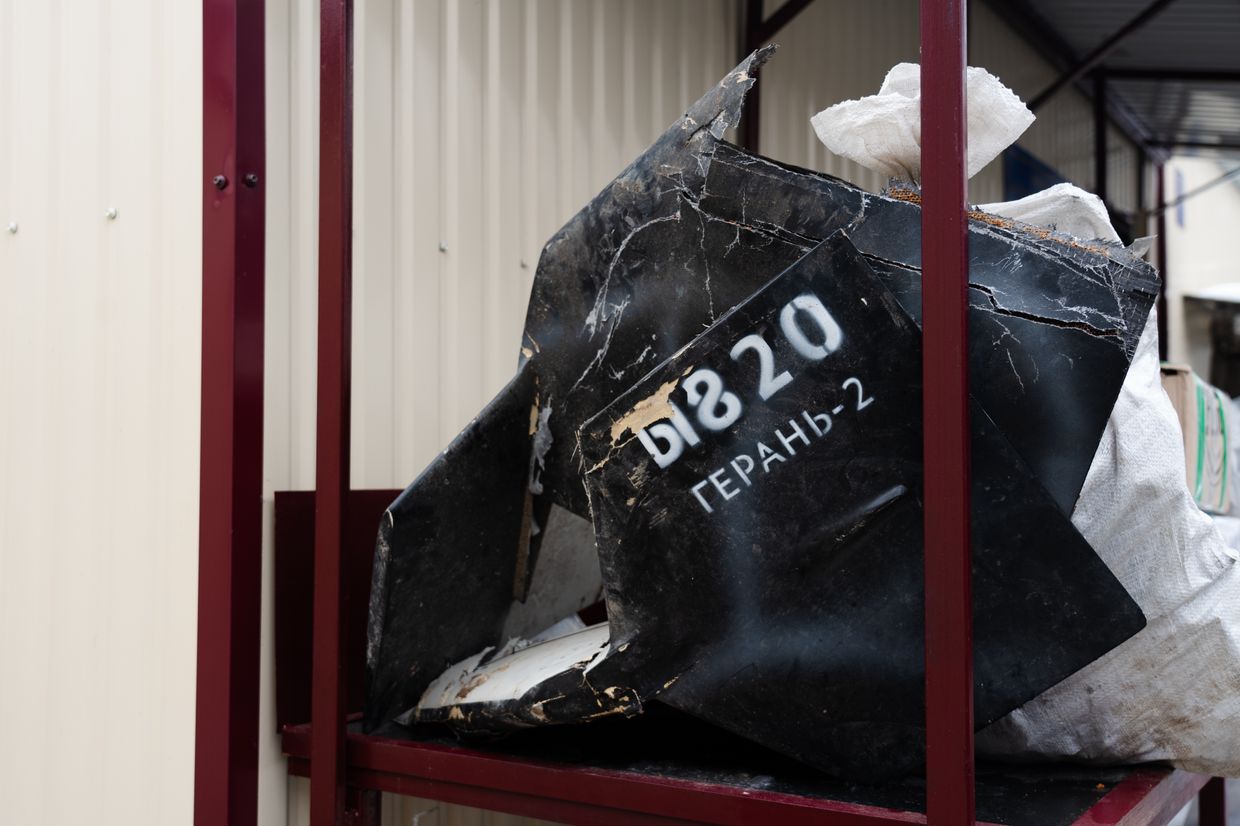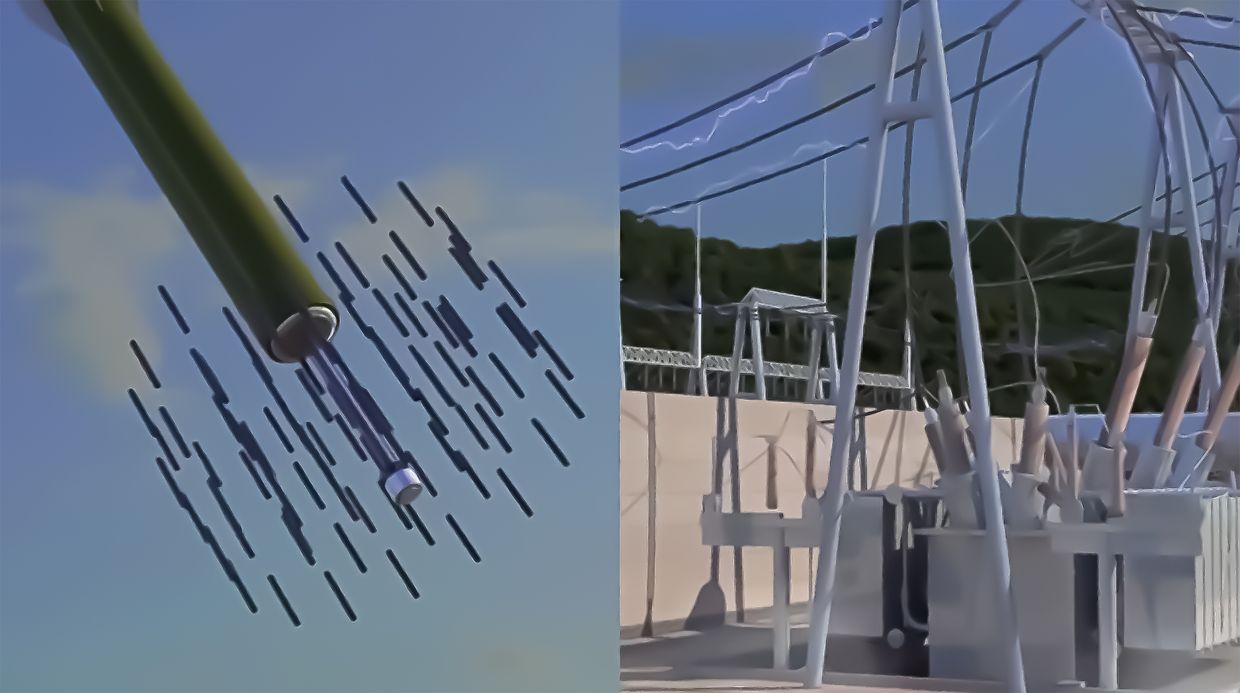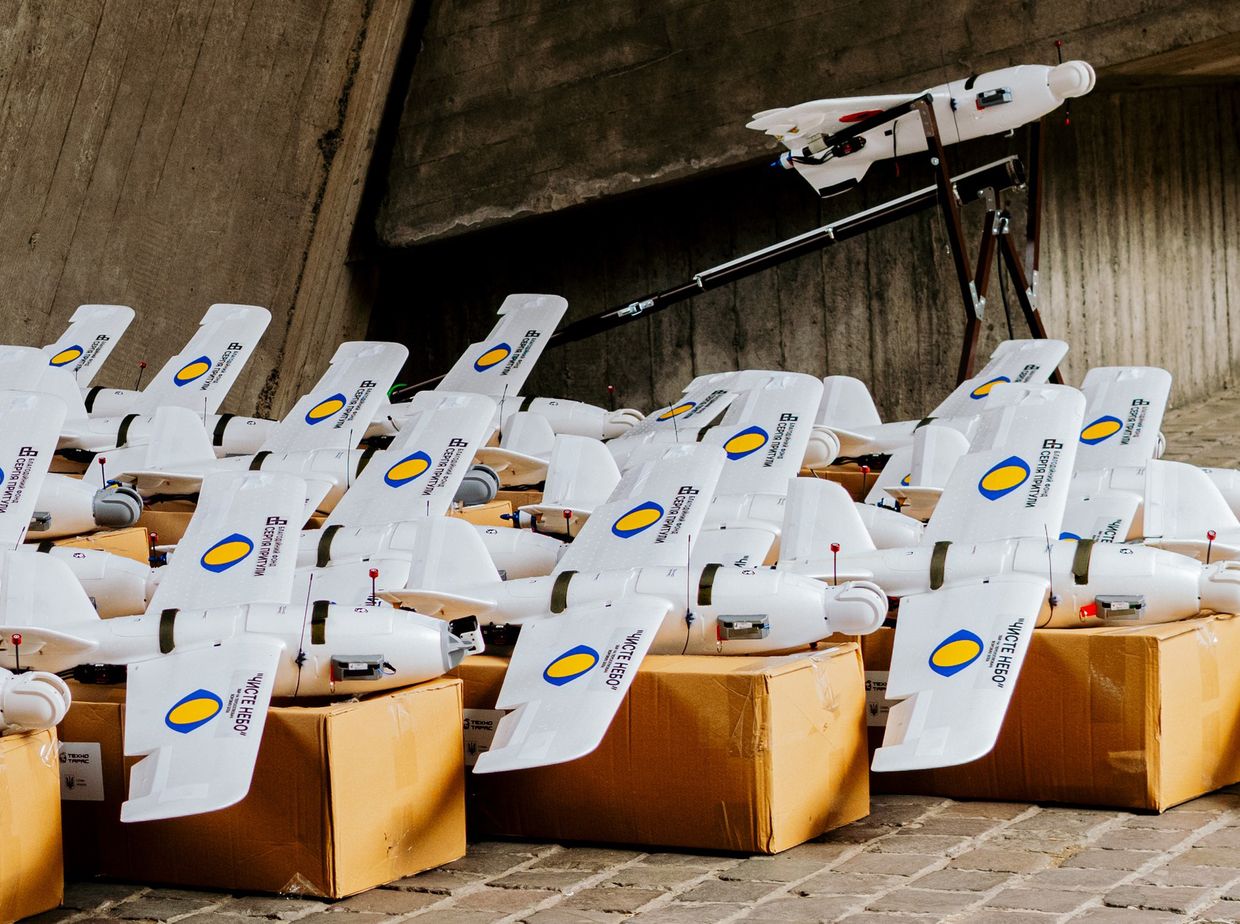Editor's note: This story initially said that Shahed-136 drones are said to weigh 10-15 kilograms. It was corrected since that is the weight of the warhead, and the drones weigh about 200 kilograms.
Iran's massive aerial assault on Israel over the weekend felt close to home for Ukraine.
In a coordinated attack involving over 120 ballistic missiles, over 30 cruise missiles, and about 170 drones, Iran sought to impair Israel's air defense capability on April 13, Israel's Defense Forces (IDF) said. The attack is said to have lasted for about five hours.
This overwhelming combination of missiles and drones launched over a short period of time is a familiar tactic for Ukrainians, who have suffered from Russia's daily bombardment since the full-scale invasion began in February 2022.
Cheap but effective Iranian-made Shahed-136 drones were reportedly among the weapons used in the attack on Israel. The same Tehran-provided loitering munition has been used by Russia en masse across Ukraine since September 2022, often threatening cities far from the front line.
Immediately after the attack, Ukraine condemned the Iranian attack on Israel. President Volodymyr Zelensky supported Israel, saying that his country is familiar with "the horror of similar attacks."
"We in Ukraine know very well the horror of similar attacks by Russia, which uses the same Shahed drones and Russian missiles, the same tactics of mass air strikes," Zelensky said in a statement on X.
The Shaheds – which are constantly being improved and operate with the help of smuggled Western technologies – have quickly become a key weapon in mass air assaults, often used to overwhelm air defense and increase the chances of successful missile strikes.
The Shahed drones are launched in large numbers. This swarm tactic works well, as the mass number compensates for the drones' main weakness—accuracy.
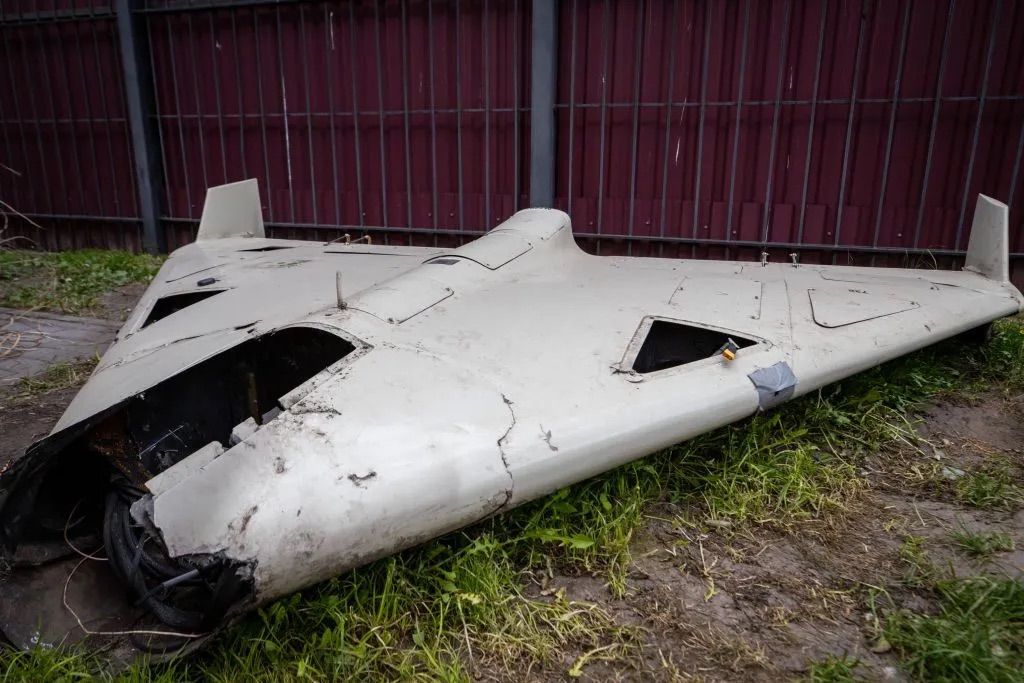
According to former Air Force spokesman Yuriy Ihnat, Russia's Shahed drones usually attack along riverbeds and roads, as it's harder for anti-aircraft radar to spot the Shaheds when they fly low over a river, and their noise is more difficult to detect with the cars' sound.
Just as the West is observing how its weapons are performing on the Ukrainian battlefield, Iran is likely also analyzing how Moscow uses and modifies Shahed drones that are now being assembled in Russia.
Game changer
The first report of Ukraine shooting down a Shahed drone came from the Kupiansk axis in September 2022, when the Kharkiv Oblast city was still occupied by Russian troops.
Shahed-136 drones, painted and relabeled as Geran 2, began targeting Ukrainian artillery and armor positions in Kharkiv Oblast in the fall of 2022, an artillery commander of the 92nd Separate Mechanized Brigade told the Wall Street Journal back then.
Since then, Russian troops have been regularly attacking energy infrastructure and residential areas in Kyiv and other cities far from the battlefield with the Shahed drones – often in combination with different types of missiles. The first Shahed drone attack on Kyiv in October 2022 damaged several apartment buildings, killing four people, including a six-month pregnant woman, the local authorities reported.
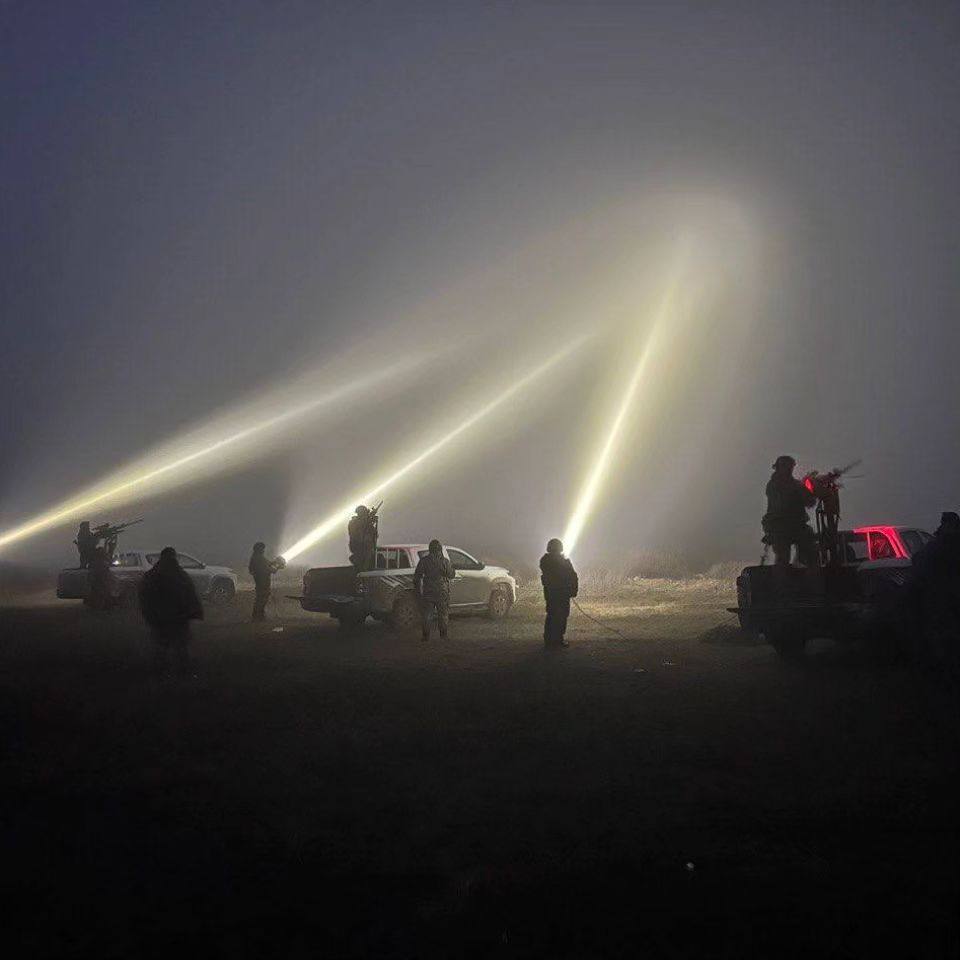
Ukraine has used small arms, heavy machine guns, and both Soviet-era and Western man-portable air-defense systems (MANPADS) with thermal imaging sights to shoot down the low-speed Shahed drones. Mobile fire groups must work attentively, as there could be just a few seconds to shoot down the aerial target.
Shahed-136 drones' flying range, claimed by various sources, varies from 1,000 kilometers (about 620 miles) to 2,500 kilometers (about 1,550 miles). They are said to weigh about 200 kilograms with a maximum flight speed of about 185 kilometers (115 miles) per hour.
Western media, such as the New York Times, has reported the cost of each Shahed-136 drone to be as low as $20,000.

But a February leak by a group of hackers from Prana Network alleged that Russia is likely paying a lot more. The group, which said it gained access to the mail servers of Sahara Thunder operating under the Islamic Revolutionary Guard Corps, claimed that after negotiations, Russia and Iran reached an agreement for each Shahed-136 drone to cost Russia $193,000 if ordered in a 6,000 batch or $290,000 in a 2,000 batch.
While the authenticity of the leak has not been officially confirmed, the Washington Post reported, citing two Biden administration officials, that the U.S. intelligence agencies “do not dispute their authenticity” after a close analysis of the documents. The IRGC is known to promote illegal arms sales between Iran and Russia.
Russia has fired over 4,600 Shahed drones as of late February over the two years of full-scale war, according to former Air Force spokesman Ihnat. While Ukraine publishes no official interception rate, the Air Force usually reports that it has shot the majority of the Shaheds launched across the country.
On April 14, the day of Iran's attack on Israel, Zelensky said in a statement that Russia had launched about 130 Shahed drones against Ukraine over the past week. The most intense Russian Shahed drone attack was reported on New Year, when Russia unleashed 90 drones overnight, of which Ukraine said it had shot down 87.
The blasting sound of Shahed drones being intercepted by air defense – or hitting a target – and Telegram news notifications warning about the threat of loitering munitions have become a near-daily reality for many Ukrainians, particularly in the country's east and south.
Despite the clear evidence of downed Iranian-made drones, Iran continues to deny that it provided Shahed drones to Russia during the full-scale war. Tehran had earlier admitted in November 2022 that it had supplied Moscow with "a small number" of Shahed drones but insisted that it was before the February 2022 full-scale invasion.
Russia has also denied using the Iranian-made Shahed drones in Ukraine.
Domestic production
To keep waging intense aerial attacks against Ukraine, Russia has strived to increase drone production.
In a January interview with RBC-Ukraine news agency, Major General Vadym Skibitskyi, the deputy head of Ukraine's military intelligence agency (HUR), said Russia launched a domestic assembly line for Shahed drones and named the expected production number to be 330-350 monthly.
Russia is reportedly ramping up domestic production of its own version of Iranian-made Shahed-136 drones. The goal is to produce 6,000 drones inside Russia by the summer of 2025 under a Tehran-Moscow billion-dollar arms deal, the Washington Post reported in August 2023, citing Russian documents it obtained.
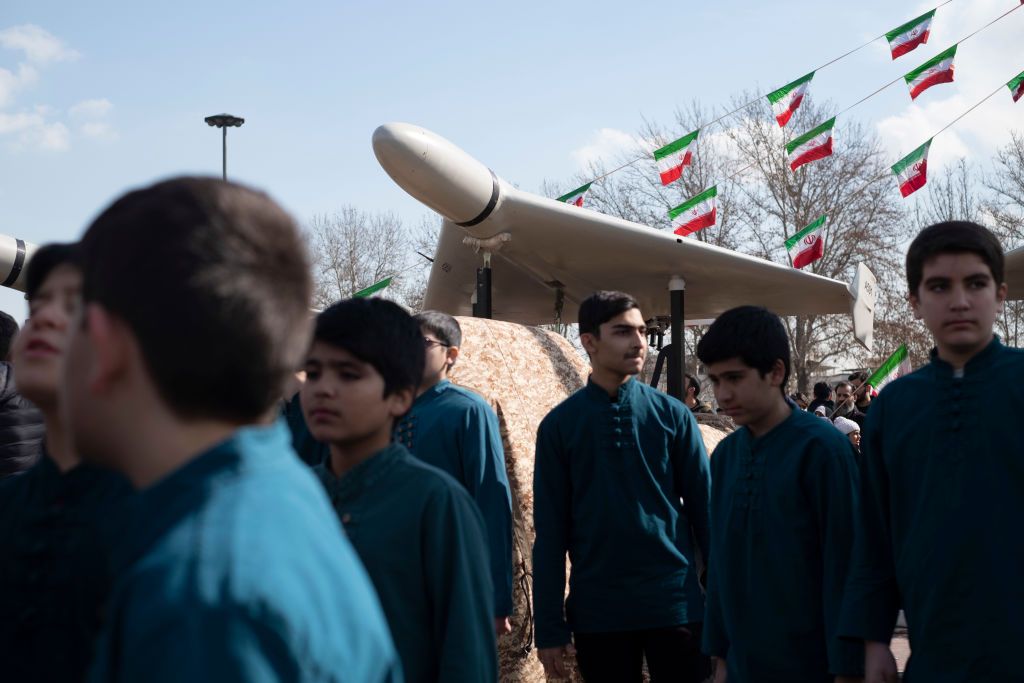
The life cycle of the Shahed-136 drones is short, according to a 2023 Conflict Armament Research field investigation. It said that the voltage converter of a Shahed-136 drone it had obtained in April 2023 was produced by a company in China between Jan. 9–15, 2023, indicating that it was "likely assembled no earlier than January 2023."
"This is testament to the central importance of Shahed series UAVs for the Russian Federation's military campaign in Ukraine: the short period between production and deployment of this expendable weapon system shows an expedited time frame, likely compelled by military necessity," the CAR report said.
Ukraine has also planned to produce its own type of Shahed drones to keep up with Russia's speed.
The Ukrainian version of the Shahed drone is identical to the original "in terms of the amount of explosives they carry, their range, and other technical parameters," Strategic Industries Minister Oleksandr Kamyshin said on television in February. The details about the quantity produced and its effectiveness in Kyiv's air campaign are unclear.
The war in Ukraine has spiked up drone production around the world to keep up with the intensity of the battles, leading to a major boost in UAV technology.
As Russia and Ukraine experiment with domestically produced and imported drones, they are drawing out the next phase of modern warfare every day.






